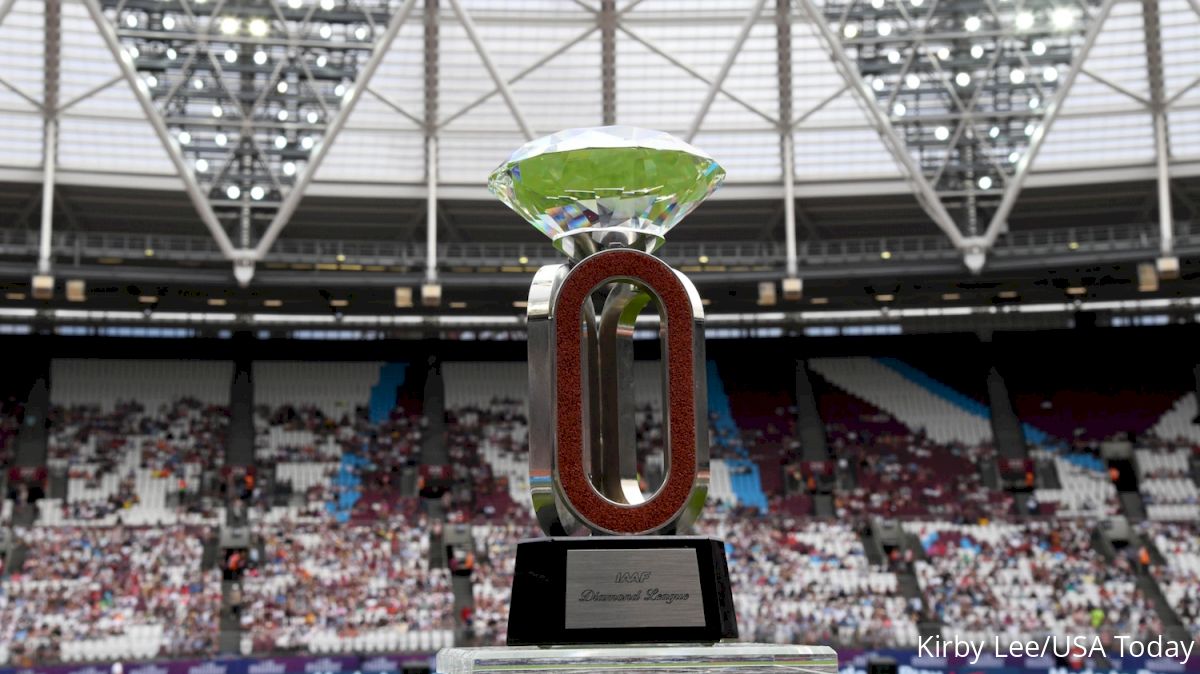The Diamond League Is Getting Smaller and Shorter
The Diamond League Is Getting Smaller and Shorter
In 2020, there will be cuts to both the number of meets and the amount of events in the Diamond League.

The IAAF announced significant changes to the Diamond League structure on Tuesday. Beginning in the 2020 season, the circuit will be scaled down from 14 to 12 meets, with a single 90-minute final meet at the end of the season.
The amount of disciplines carrying Diamond League distinction will also be cut from 32 to 24 (12 men’s events and 12 women’s events). The list of contested events has yet to be announced, though the IAAF has said that the longest distance in the new program will be 3000m.
The new format comes after the IAAF initiated a review of the Diamond League that “included detailed research and discussions with athletes, coaches, fans and broadcasters.”
Here’s a closer look at some of the key changes:
On cutting meets:
“The evaluation criteria introduced in 2018 will be used at the end of the season to assess the quality of each meeting with the aim of focusing the IAAF Diamond League on the very best 12 meetings going forward with one end-of-season final.”
The current Diamond League has 14 meets, meaning two will get dropped after this season. In 2016, Rabat, Morocco replaced New York on the circuit, leaving the United States with just one Diamond League. With the renovations to Hayward Field (and the heavy influence that the meet has in the port), there’s no chance the Prefontaine Classic isn’t among the 12 meets. It’s also hard to see European staples like Monaco, Zurich, Brussels, Lausanne, Oslo and Stockholm being excluded. Whoever does get cut, however, will be given a parachute in the form of compensation and placement into the “Continental Circuit of one-day meetings.”
On number of disciplines:
“An agreed 24 disciplines (12 male / 12 female) will form the core disciplines at all 12 meetings with the longest distance being 3000m. A reduction from the 32 disciplines there are now.”
First, the use of “agreed” is interesting. Trying getting six people in track and field to agree on anything is a chore. Dropping eight events is not going to be easy. Previously, each meet had a different set of events that were “Diamond League” events. This process seems to be doing away with that.
Now, this doesn’t mean that those will be the only events that the meet hosts. A Prefontaine Classic without a 5000m or a 10,000m is a like a Super Bowl without a kickoff. Those events will still fill out the schedule, they just won’t be part of the Diamond League.
However, it’s hard to think this won’t hurt the 5000m, at least in the short-term. The 10,000m has almost disappeared as an event and fewer meets being required to host a 5000m will definitely limit visibility for distance runners at the highest profile meets.
In the current system of 32 events, only the 10,000m and the hammer throw are excluded. These cuts will go much deeper. Once you throw out the 5000m, you still need to drop six more events to get to 24.
On the final:
“Develop an enhanced single final event which features all core 24 disciplines (12 male and 12 female).”
The current format has two finals, with half the events in Zurich and half in Brussels. It’s much easier to do that in one meet when you only have 24 events.
Out-of-stadium events
“A focus on innovation around out-of-stadium / city centre field events where fans can get closer to the action.”
Translation: more pole vaulting in the street, more throwing in the town square.
Length of competition
“Working with our Rights Holding and Host Broadcasters on a faster paced 90-minute television event that will link the 12 events and the athlete’s points so fans can more easily follow the road to a single final at the end of the season.”
Most meets typically sit in the two-hour range. This would drop 30 minutes off of that. Without any races over 3000m, this shouldn’t be too difficult to achieve.
Incentives to compete
The release mentions using the new world rankings and a “tiered prize money system” to “capture the very best athletes in exciting head to head clashes.”
Of course, the ability to create those races depends on just how much money they are talking about.